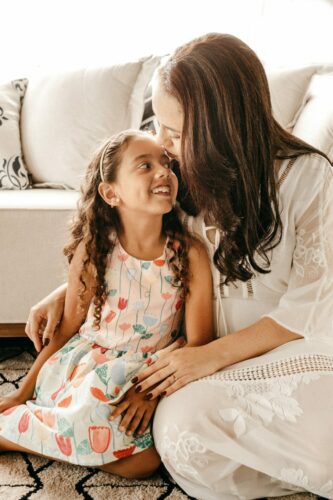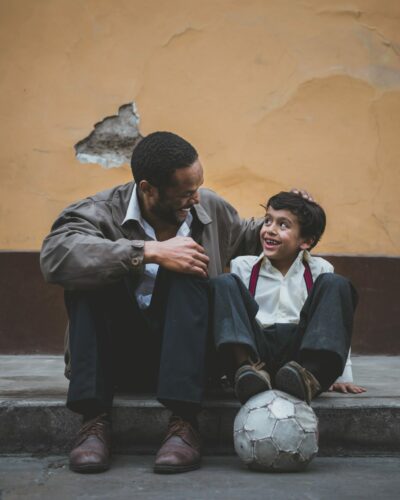At Sarah’s Home we believe in reaching as many people as possible in order to educate them about trafficking in our nation. We believe that education is vital in the prevention of trafficking. Once that information has been shared, it’s not uncommon that people then ask, “now what? How do I help protect the kids in my life? In my sphere of influence?” We hear you, and we want to help!
Before we jump into some resources, it is important for you to hear this. The most important thing that you can do for the kids in your life is to LOVE, ENCOURAGE and SUPPORT them. Most of the resources we are going to share have a similar heartbeat which is, while these conversations are important to have, the best thing that you can do for kids in your life is to be a safe place for them . That means showing up in the little things so that when the big things come up, they know that you are a person that is safe to come running to when the world gets scary. Don’t underestimate the importance of your presence in the lives of these kids. It matters!
 It may be tempting to want to keep your kids as close as possible at all times after hearing about the realities of trafficking. But the truth is that at some point in their life, kids will encounter and interact with the world. As people of influence in their life, what will you do to help build resilience in them? Then, when they encounter something scary, they will have the tools to know what to do. We would suggest that you talk to them. That you take the time to have some difficult and sometimes uncomfortable conversations with them. We recognize that this is an easy thing to say, but can be really intimidating to execute. That is why we want to give you resources that will empower you to feel confident in initiating these conversations.
It may be tempting to want to keep your kids as close as possible at all times after hearing about the realities of trafficking. But the truth is that at some point in their life, kids will encounter and interact with the world. As people of influence in their life, what will you do to help build resilience in them? Then, when they encounter something scary, they will have the tools to know what to do. We would suggest that you talk to them. That you take the time to have some difficult and sometimes uncomfortable conversations with them. We recognize that this is an easy thing to say, but can be really intimidating to execute. That is why we want to give you resources that will empower you to feel confident in initiating these conversations.
We also understand that there are so many different angles that this subject can be approached. Depending on the age of the child, these conversations need to look different. Our hope is to give you a wide range of resources so that you can pick ones that work well for you and the kids in your life.
The first resource we want to share is a children’s book called “The Swimsuit Lesson”. Written by a former police officer who worked in crimes against children, it is a book designed to help parents have the conversation with their young children about body safety. The sweet, yet simple conversation that the mother has with her children as she gets them dressed to go play in the sprinklers, is a beautiful example of how everyday moments can be turned into teaching opportunities. It helps to give language that can be used with very young children to help them begin to understand what is safe and unsafe and who to come to should they ever feel unsafe. There is also a parent section at the back of the book that guides parents in ways that they could use this book with their children.
The next two books are the same book just written for different age groups, “Good Pictures Bad Pictures” and “Good Pictures Bad Pictures Jr.” The whole intent of these books is to build resilience in children so that they understand from a young age what to do should they encounter pornographic images. The junior version uses words that are easy for young children to understand and give a simple plan for them to follow if they see a bad picture. The older version goes into more detail of the science of how addictions work, what happens in our brains when we see a bad picture and again gives a plan for kids to follow if they see a bad picture. The great thing about these books is that they emphasize that if they see a bad picture, they are not a bad kid. Through using these books, parents can reassure their children that they are a safe place to come should they see something they know is a bad picture.
There are also a lot of really great online resources available that help facilitate some of these difficult conversations. These range from online books, to videos, to comic books, and much more that can be used for people to educate themselves as well as some that can be used with kids to start good conversations.
 The first website is Shared Hope International. They have recently developed a new online safety curriculum that is available for anyone to use and share. It has handouts for parents to better understand the different platforms that kids are using, handouts that can be shared with kids and teens about safety online as well as a new interactive website for teens to go to in order to help them better understand ways to stay safe online.
The first website is Shared Hope International. They have recently developed a new online safety curriculum that is available for anyone to use and share. It has handouts for parents to better understand the different platforms that kids are using, handouts that can be shared with kids and teens about safety online as well as a new interactive website for teens to go to in order to help them better understand ways to stay safe online.
A21 has also recently updated their prevention materials. They have material that can be used from ages as young as 3 up to teens. They have books that can be printed or ordered that are focused on general safety and online safety which are both directed towards younger children. There are handouts for teens regarding online safety as well as education material for parents and how to bring up these difficult conversations. Because A21 is a global organization, these materials are available in several different languages.
The last website is the National Center for Missing and Exploited Children (NCMEC). They have a few different web-based curriculums that can be used with children to discuss general safety as well as online safety. Their program, KidSmartz, is designed to take kids through different safety scenarios to help them understand what safe and unsafe people and situations can potentially look like. Their other online program, NetzSmartz, has several different interactive elements and videos that can be used to help talk about online safety with children and teens.
You can see that this gives a wide range of resources that address several different elements of safety, from general body safety, to pornography, to sex trafficking, to online safety. We believe that all of these conversations are vital in building resilience in children to help protect them from being exploited. Our hope is that these resources will help you feel confident to begin having these difficult conversations. It may be uncomfortable, but it could be the thing that helps save a child.

